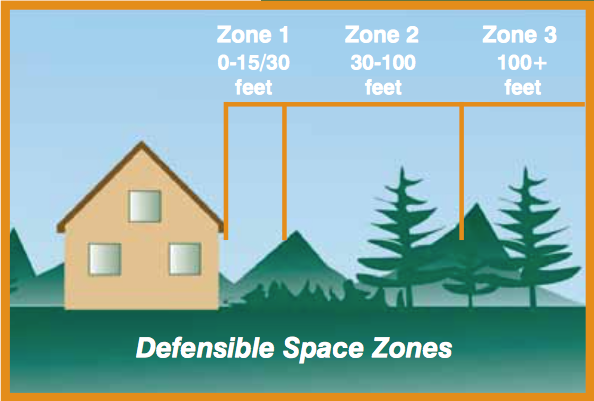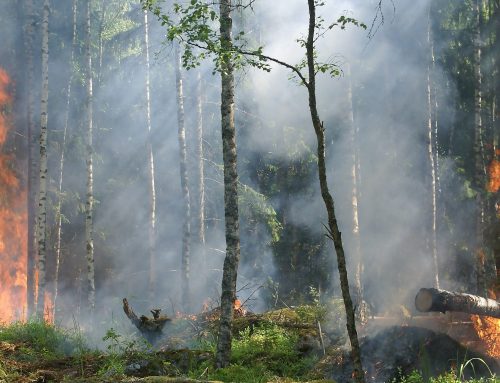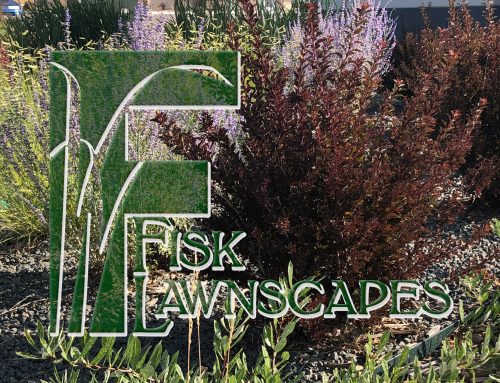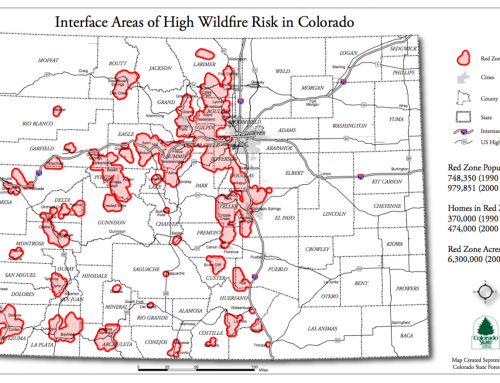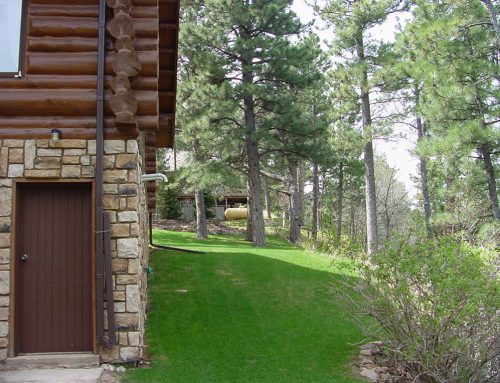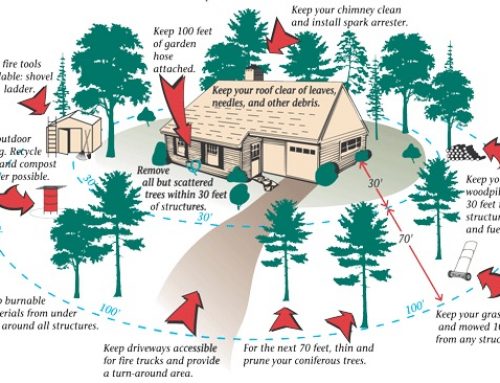Fire mitigation is all about creating a defensible space for your home. Reducing the amount of materials stored around your house as well as how and where you store them can significantly decrease your risk of fire getting to your house. Seemingly small actions, such as moving your firewood 30’ away from your home instead of under your deck could be the difference between your home catching fire and not.
There are 3 defined zones around your property that can be analyzed to mitigate fire risk: 0 feet to 30 feet from your structure, 30 feet to 100 feet, and 100 feet to beyond. Let’s look at each of these zones in more detail:
Zone 1: 0’ to 30’ from your structure
This zone is the most important for reducing risk, and should be measured from the furthest point attached to your home. This could be the the edge of the eaves of your house, or any attached structures – such as decks or patios.
Some keys to look at:
- Is there non-flammable ground cover and fire-resistant plants within the first 5 feet? Decorative rock creates an attractive, easily maintained, non-flammable ground cover. Mulch, pine needles, and certain plants such as Junipers invite fire and should not be kept in the immediate vicinity of your home
- Have you pruned and maintained the plants around your home? This includes removing all dead branches and leaves within and below the plant.
- Have you pruned and maintained the plants around your home? This includes removing all dead branches and leaves within and below the plant.
- Wild grasses around your house should be kept mowed at 6” or lower
- Are you storing firewood or other combustible materials within the first 30’ of your home? If so, move them – at least 30 feet away and uphill if possible.
- Ideally, removing all trees from Zone 1 would reduce fire hazards — the more trees you move, the safer your home will be.
- Your roof and gutters: remove any overhanging branches, keep any flammable materials at least 10ft away from your chimney, remove leaves, pine needles, and any other debris.
Zone 2: 30’ to 100’ from your structure
Zone 2 is an area of fuels reduction designed to diminish the intensity of a fire approaching your home. Depending on your situation, this zone may extend beyond your property boundaries. This is a great time to get to know your neighbors better, and partner together to complete an appropriate defensible space.
Because zone 2 forms an aesthetic buffer and provides a transition between zones, it is necessary to blend the requirements for zones 1 and 3. For example, if you have a tree in zone 2 with branches extending into zone 1, the tree can be retained if there is proper crown spacing.
Some keys to look at:
- Are there stressed, diseased, dead, or dying trees or shrubs that you can remove?
- Crown separation (measured from the outermost branch of one tree to the nearest branch on another tree) is key – try to create 10’ spacing in between crowns. Shrubs should be spaced wider at 15’ in between clumps of shrubs.
- Remove all ladder fuels (live or dead vegetation that allows a fire to climb up from the landscape into the tree canopy – including tall grasses, shrubs, branches, and more) from under remaining trees. Prune tree branches off the trunk to a height of 10’ or 1/3 the height of the tree, whichever is less
- Mow and trim wild grasses to a maximum height of 6” – especially critical in the fall when things begin to dry out
- Firewood – stack uphill from or on the same elevation as any structures, and at least 30’ away. Clear all flammable vegetation within 10’ of your wood piles.
- Propane & Natural Gas Meters – Locate these at least 30’ from your home/structure, preferably on the same elvation as the house. Clear all flammable vegetation within 10’ of your tank or meter, an install 5 feet non-flammable ground cover around the tank and meter instead of screening them with shrubs or flammable fencing.
Zone 3: 100’ and beyond from your structure
This is a chance to improve the health of the forest around you, including helping protect trees against insects and diseases, boosting the health and growth rate of your trees, and increasing tree survivability during a wild fire.
Some keys to look at:
- Does the forest around you have trees of multiple ages, sizes, and species?
- How many snags (dead trees) are there in this area? Try to keep them at no more than 3 per acre.
- Pruning is ideal, especially around trails and firefighter access roads
- Keep in mind the hazards of ladder fuels.

